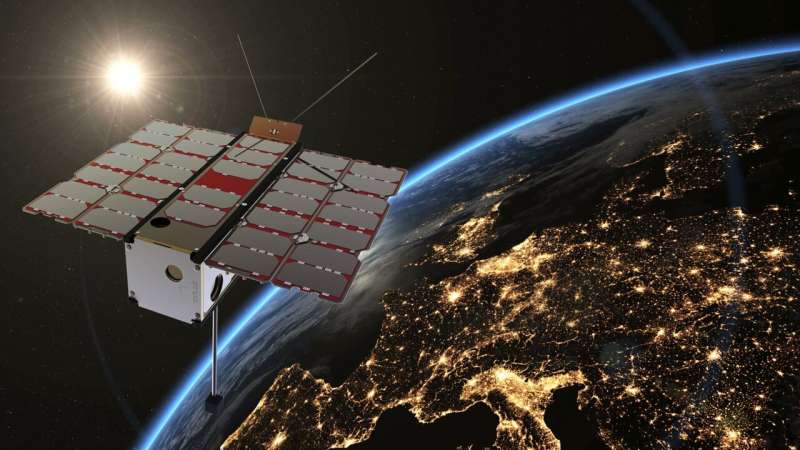RadCube extends its magnetometer boom

ESA's latest CubeSat—RadCube, for surveying space weather in low-Earth orbit—has completed its rigorous commissioning phase, culminating in the extension of a magnetometer boom longer than the miniature satellite itself.
The surface of Earth is a rare low-radiation oasis, largely protected from the charged particles riddling space by our planet's magnetic field. RadCube is a mission to demonstrate miniaturized technologies for measuring this space radiation environment as well as magnetic field strength—all within a satellite that could fit into an airliner carry-on bag.
CubeSats are satellites assembled from standardized 10-cm boxes. RadCube is a three-unit CubeSat, newly developed for ESA by C3S in Hungary.
Hungary's Centre for Energy Research (EK) contributed the payload controller system and a radiation telescope to the mission, combining two detectors to measure the direction as well as energy of charged particles. The UK's Imperial College built a magnetometer consisting of two sensors, one within the CubeSat and another at the end of a rolled-out 80 cm boom, which comes from Astronika in Poland.
Launched aboard ESA's Vega launcher flight VV19 in August, RadCube also hosts an ESA experiment to test the resilience of computer memories against space radiation.
"The all-new CubeSat platform and the precision of RadCube's miniature instruments demanded a complex commissioning process, which has now been successfully completed," explains Dorottya Milánkovich from C3S.
"The full extension of the magnetometer boom marked a dramatic final milestone; this is a necessary feature to prevent any anomalous magnetic measurements emitted from the satellite itself," says Dominik Nolbert from Astronika.
Jonathan Eastwood from Imperial College adds: "In fact, the outboard magnetometer data clearly shows no magnetic noise coming from RadCube, with results well in line with expected values from Earth magnetic field models."
"RadCube's radiation measurements are also showing good comparison data with other satellites, revealing elevated radiation levels from the recent solar storm," says Attila Hirn from EK.
Provided by European Space Agency



















